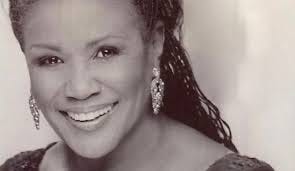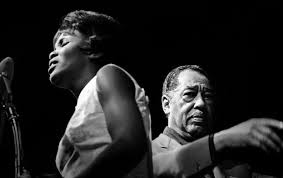Do you want more proof of the creative flowering that happened in pop, soul and R&B during the late 1960s and early ‘70s?
As Ahmir Questlove Thompson’s documentary Summer of Soul so thrillingly affirms, music culture was alive. And, primarily and perhaps not coincidentally, it was all-the-way live; performance was a proving ground.
It was deep, too – an ecosystem that grew and developed talent, with those at the forefront championing the rising stars of the undercard. That seems like an exotic notion now, given the constant churn in the hitmaking ranks and careers that last about as long as the average 16 year old’s attention span.
Here’s one way to gauge how healthy music was then: Check the work of artists who were out there doing the work but never got the big break. Who never managed to capitalize on whatever breaks might have come their way.
People like Esther Marrow, sometimes known as Queen Esther. A native of Newport News, Va., Marrow, now 80, was known for her strong, resolute voice. Her phrasing carried the fiery energy that’s associated with Mahalia Jackson; like Mavis Staples and other Jackson disciples, Marrow was forthright and true to her internal code, using repetition and other techniques of preachers and choir leaders to galvanize listeners. She poured pure conviction into words written by others: She told the men in her life to “Walk Tall” in a way that suggested this wasn’t exactly optional, and sang about how “Things Ain’t Right” with a mixture of dismay at current conditions and abiding hope for change.
Marrow made two more or less secular records. The 1969 one, titled Newport News, Virginia, follows the Staple Singers groove playbook with mixed results; the 1972 followup, Sister Woman, is considerably more assured – and far more interesting musically. If someone asked me to cite one little-known track to make the argument about the creative potency of music in the early ‘70s, today I’d go with the opener “Woman in the Window.”
As the spry, jazz-inflected groove unfolds, Marrow shares what a woman sees in her neighborhood as she looks out the window – families under stress and fraying, conflicts erupting. Then, in a canny interpolation that presages the era of sampling, the tempo gets cut in half as she and a choir sing the iconic “Oh say can you see?” line of the Star Spangled Banner. It’s jarring at first, this reference, but soon enough registers as genius, a moment of arranging creativity that’s a bit subversive, a kind of anti-hook.
By the time of Sister Woman in 1972, Marrow already had some serious music business experience. She was “discovered” while working in New York’s garment district and brought to the attention of Duke Ellington. At the time, 1965, Ellington was developing the program for what became his first Sacred Concert, commissioned by San Francisco’s Grace Cathedral. Ellington asked her to sing his majestic “Come Sunday” from Black, Brown and Beige and other pieces.
This was her first performance outside of a church.
From there, Marrow spent four years touring intermittently with Ellington. She then performed as Auntie Em in the Broadway production of The Wiz for five years, appeared with Ray Charles, Thelonious Monk and others, and began recording under her own name. Later, she founded a touring group called the Harlem Gospel Singers and has been featured on several of its more recent recordings. One example is included on the attached playlist.
Listening to Queen Esther Marrow’s music now, we don’t necessarily think about the dynamics of the world in which it was created. But that context matters in the telling now: This was a time of abundant talent exploding in many directions at once, with the sounds and ideas traveling fast to shape subsequent generations. Artists had to bring serious individuality to stand out. It was a time when the people involved in record-making were thinking in an open-minded way, experimenting with complex vocal harmonies and sudden changes of meter (a la “Woman In the Window”) and so much more. The legacy of that era is mostly contained in the recordings we think of as canonical. Mostly. But as the music of Queen Esther Marrow suggests, not entirely.








